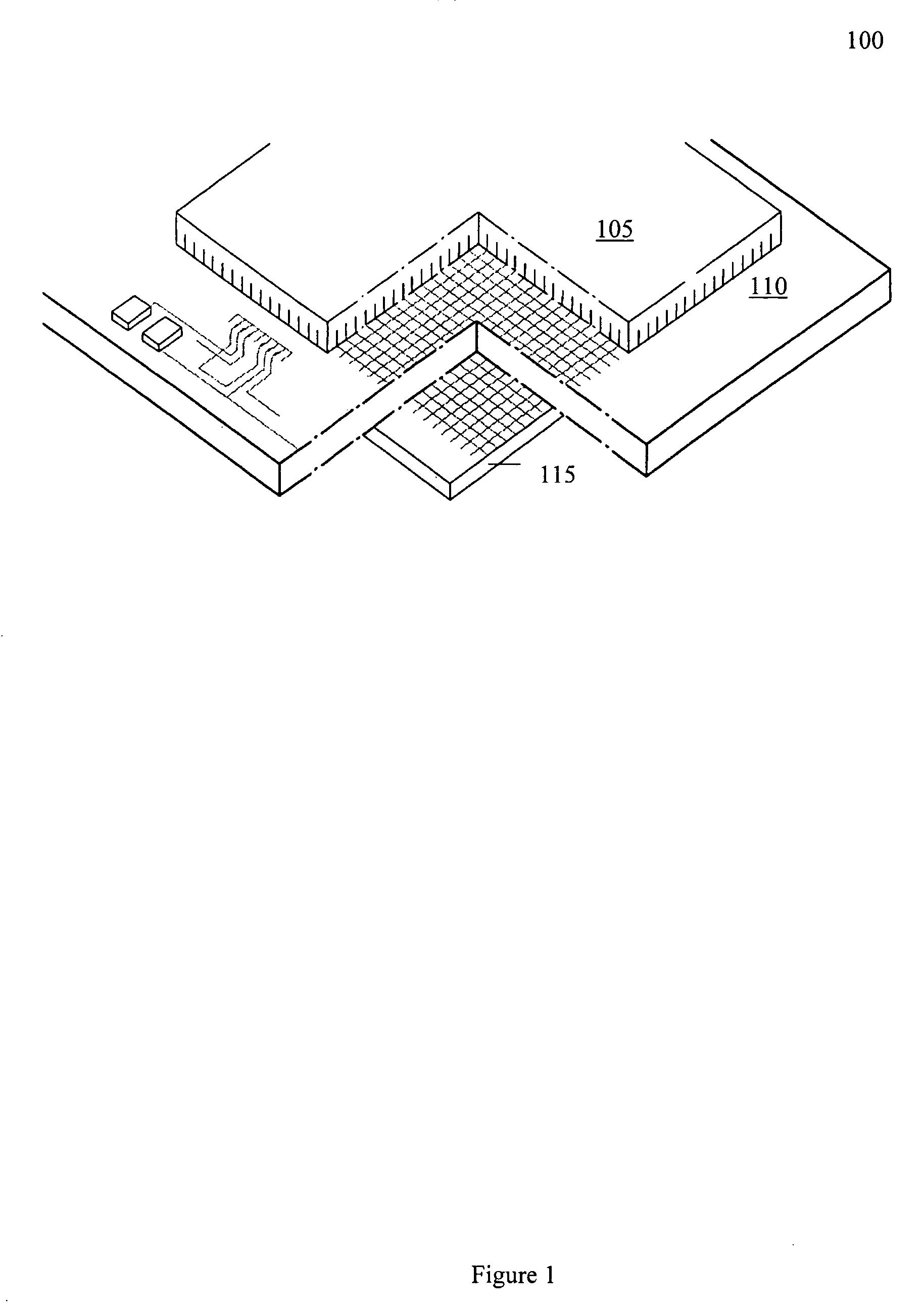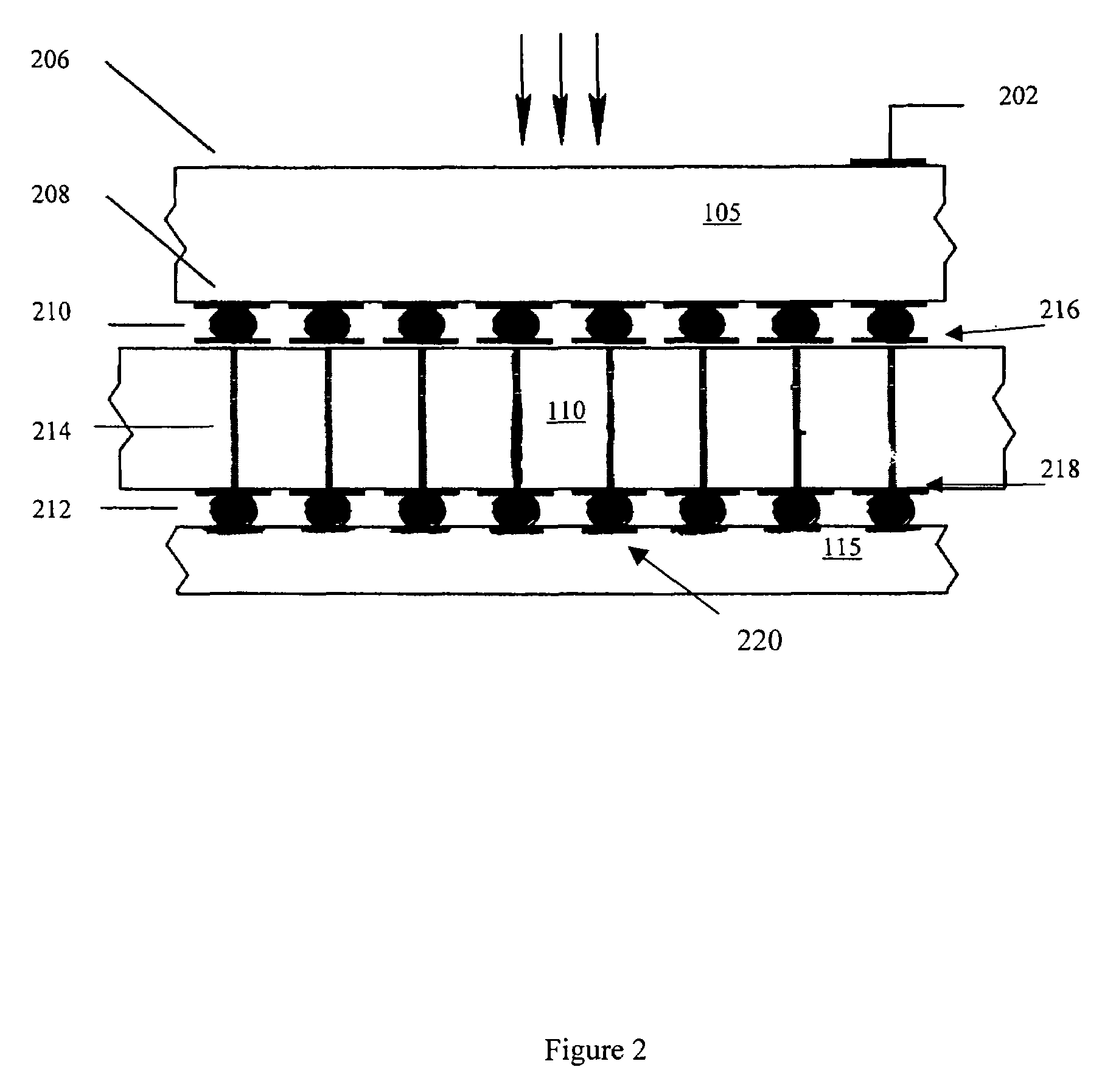Far infrared photoconductor array
a photoconductor array and infrared radiation technology, applied in the field of infrared radiation sensing, can solve the problems of inefficient interfacing of the detecting array with the readout electronics, the inability to develop a sensing device that detects all wavelengths of radiation from the electromagnetic spectrum, and the inability to meet the requirements of the measurement device, so as to achieve significant reduction of signal contamination
- Summary
- Abstract
- Description
- Claims
- Application Information
AI Technical Summary
Benefits of technology
Problems solved by technology
Method used
Image
Examples
Embodiment Construction
[0018]FIG. 1 illustrates a far infrared (IR) photoconductor array 100, according to one embodiment of the present invention. Photoconductor array 100 is designed such that a blocking layer 110 is sandwiched between a detecting layer 105 and a readout layer 115. The design of photoconductor array 100 provides superior protection against readout glow by having the blocking layer 110 restrict the glow from reaching the detecting layer 105.
[0019]Detecting layer 105 converts radiant energy, particularly far infrared radiation, into electrical signals containing information about the incoming radiation that are processed by readout layer 115 and subsequently analyzed by a computer-based micro-processing device. In addition to blocking the glow from the readout layer 115 from reaching detecting layer 105, the blocking layer 110 provides an effective electrical conduit between detecting layer 105 and readout layer 115 for transferring electrical signals. Readout layer 115 specifically conve...
PUM
 Login to View More
Login to View More Abstract
Description
Claims
Application Information
 Login to View More
Login to View More - R&D
- Intellectual Property
- Life Sciences
- Materials
- Tech Scout
- Unparalleled Data Quality
- Higher Quality Content
- 60% Fewer Hallucinations
Browse by: Latest US Patents, China's latest patents, Technical Efficacy Thesaurus, Application Domain, Technology Topic, Popular Technical Reports.
© 2025 PatSnap. All rights reserved.Legal|Privacy policy|Modern Slavery Act Transparency Statement|Sitemap|About US| Contact US: help@patsnap.com



